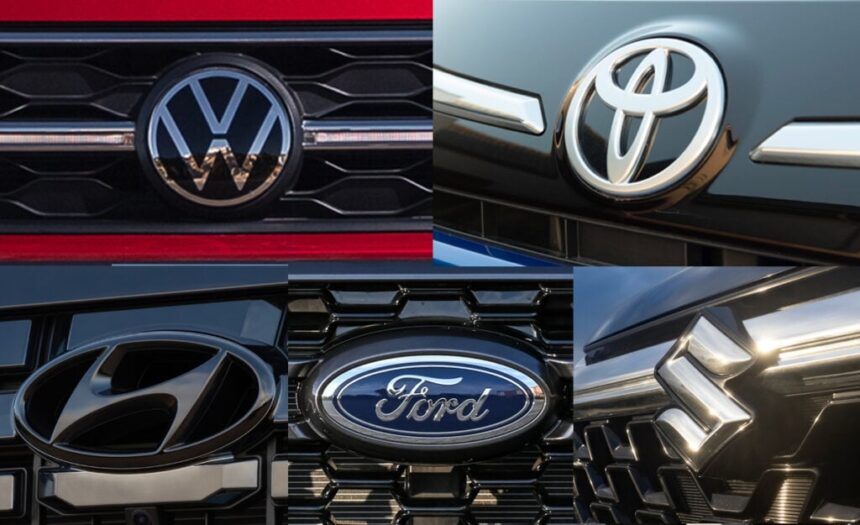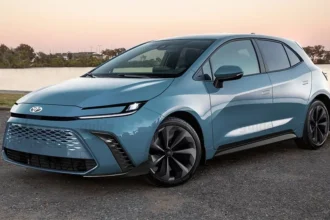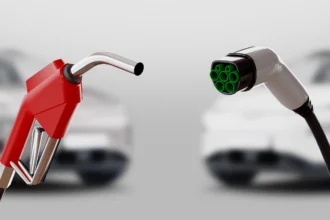The quest for the most affordable car in Africa transcends a simple price tag. It is a complex economic equation defined by currency volatility, punitive import duties, infrastructural demands, and a seismic shift in technology from gasoline to electric power. For the entrepreneur, the growing middle-class professional, or the fleet manager operating in Lagos, Nairobi, or Johannesburg, affordability is measured not in the initial USD sticker price, but in the Total Cost of Ownership (TCO) over five years.
This comprehensive analysis moves far beyond a superficial list, providing an in-depth breakdown of the economic and logistical factors that truly determine vehicle affordability across the continent’s key markets. By comparing the traditional low-cost champions of the Internal Combustion Engine (ICE) category against the disruptive newcomers in the Electric Vehicle (EV) space, we reveal the actual winners in the African mobility race of 2025.
⚖️ The Economic Bedrock: What Drives African Car Prices?
Before examining any single model, it is crucial to understand the unique economic landscape that inflates costs and shapes consumer behavior in Africa, often resulting in vehicle prices significantly higher than global benchmarks.
1. The Currency Rollercoaster: Exchange Rate Volatility
Almost all new cars and the vast majority of parts are imported, making their cost inextricably linked to the exchange rate between local currencies (e.g., Nigerian Naira, Kenyan Shilling, South African Rand) and the US Dollar (USD).
- Impact: When the local currency weakens, the USD cost of the vehicle remains static for the manufacturer, but the price in local currency skyrockets for the consumer. Dealers maintain pricing uncertainty and must price vehicles defensively to account for the risk of sudden currency devaluation, adding a built-in buffer that increases the final USD price.
- Affordability Driver: This volatility pushes consumers toward brands and models with a local assembly presence (e.g., in South Africa) or those with highly efficient global supply chains that can absorb minor shocks, such as Suzuki and Toyota sub-brands.
2. The Tax Wall: Punitive Import Tariffs and Duties
The single greatest contributor to the high USD cost of new and used cars in many African nations is the structure of government taxes, duties, and levies, often designed to protect nascent local manufacturing or simply generate revenue.
| Country | Key Tariff Structure on New Cars (Approx. 2025) | EV Incentives | Primary Affordability Impact |
| South Africa | $\approx 25\%$ Import Duty + $14\%$ VAT + up to $20\%$ Ad Valorem Tax (Total can exceed $60\%$) | EVs face the same $\approx 25\%$ Duty as ICE cars, making them expensive upfront. | High duty on all imports pushes consumers toward locally produced/assembled models or older, cheaper used imports. |
| Nigeria | $20\%$ Import Duty + $15\%$ Levy + $7.5\%$ VAT (Total $\approx 42.5\%+$) | EVs are sometimes exempt from specific levies (e.g., ECOWAS levy), offering a marginal reduction. | High import fees and a strict 10-year age limit on used imports push new car buyers to the absolute cheapest models. |
| Kenya | $25\%$ Import Duty + $20\%$ Excise Tax (varies by engine size) + $16\%$ VAT (Total $61\%+$) | Reduced Excise Duty (down to $10\%$) on electric vehicles makes the upfront cost of EVs significantly more competitive. | Aggressive tariffs on high-CC cars make small-engine vehicles and EVs the only genuinely affordable options. |
3. The Used Market Dominance (The ‘Tokunbo’ Economy)
In many markets, affordability is defined by the used car segment. Only a tiny fraction of the population can afford a new car (as low as $2\%$ in Nigeria). The $5,500 – $10,999 USD bracket captures the bulk of the used market sales.
- The TCO Factor: Buyers in this segment prioritize durability and easy maintenance over new features, driving perennial demand for reliable, older Japanese models (Toyota Corolla, Honda Civic) which have vast spare parts networks.
- The Affordability Gulf: The success of the used market underlines the failure of the new car market to reach true mass affordability, making the new budget models listed below highly vulnerable to competition from $5,000$ to $7,000$ USD used imports.
⛽ Part I: The Reign of the Ultra-Affordable ICE Champions (New)
The most affordable new cars in Africa are designed for one purpose: surviving the TCO calculation with low running costs and minimal complexity. They are priced below $11,000 USD at the base level.
Feature Car 1: The Suzuki S-Presso / Toyota Vitz Duo
In an age of global platform sharing, the Suzuki S-Presso and its stablemate, the Toyota Vitz (a re-badged Suzuki Celerio/Baleno product), represent the pinnacle of new-car affordability, consistently trading places for the lowest price point in USD.
| Metric | Suzuki S-Presso (ICE) | Economic Impact |
| Initial Price (USD) | $\approx \$9,700$ | Lowest entry point for a brand-new car, offering high psychological value. |
| Engine | $1.0\text{L}$ naturally aspirated (3 cylinders) | Simple, non-turbo engine means low complexity and minimal failure points. |
| Fuel Efficiency | $4.9 – 5.4\text{ L}/100\text{ km}$ (Real World) | Extremely low fuel consumption, a primary hedge against rising global fuel prices. |
| Maintenance | $\approx \$300-\$400/\text{year}$ | Parts are abundant, non-proprietary, and cheap due to the massive Maruti Suzuki parts ecosystem. |
| Ground Clearance | High (for a hatchback) | Critical design feature for navigating poor road infrastructure, reducing expensive suspension and undercarriage repairs. |
Feature Car 2: The Renault Kwid
The Renault Kwid carved out its niche by offering a slightly larger, SUV-inspired aesthetic and a marginally better feature set than its rivals at a competitive price.
- Initial Price (USD): $\approx \$10,700$
- Competitive Edge: It offered a digital instrument cluster and a touchscreen infotainment system in early models, making it feel less utilitarian than its rivals, driving sales among younger urban buyers.
- TCO Challenge: While efficient, the Kwid’s components may not have the same proven, ubiquitous parts network as the Suzuki/Toyota family, potentially leading to slightly higher long-term maintenance costs in less developed regions.
⚡ Part II: The Disruptors – Affordable EVs and the TCO Revolution
The true affordability revolution in Africa is not happening in the gasoline segment, but in the EV sector, primarily due to aggressive pricing from Chinese manufacturers and favorable government tax policies in select countries.
Feature Car 3: The BYD Seagull (New EV)
The BYD Seagull (and similar models like the BYD e1) represents a paradigm shift. Its base price puts it directly in competition with the entry-level ICE cars before considering import duties.
| Metric | BYD Seagull (EV) | Economic Impact |
| Initial Price (USD) | $\approx \$9,100$ (Ex-Works China) | The first new EV truly capable of matching ICE prices, even after shipping. |
| Battery/Range | $30.08\text{ kWh}$ / $305\text{ km}$ (CLTC) | More than adequate for urban African commutes. |
| Fuel/Energy Cost | $\approx 80\%$ cheaper than gasoline | The major TCO advantage. Charging at off-peak rates or using subsidized residential electricity drastically undercuts fuel costs. |
| Maintenance | $\approx \$100-\$200/\text{year}$ (Scheduled) | Up to $70\%$ cheaper than ICE over five years due to 20x fewer moving parts (no oil, plugs, filters, or belts). |
The TCO Showdown: ICE vs. EV
To demonstrate true affordability, we must compare the Total Cost of Ownership over a realistic five-year period, based on an average annual mileage of $15,000 \text{ km}$ ($9,300$ miles) in an African urban environment.
Hypothetical 5-Year TCO Comparison (USD):
| Component | Suzuki S-Presso (ICE) | BYD Seagull (EV) |
| Purchase Price | $\$10,000$ | $\$11,000$ (Higher import cost assumed) |
| Fuel/Energy Cost | $\$5,500$ (Based on $5.2\text{ L}/100\text{ km}$ at $\approx \$1.40/\text{L}$) | $\$1,200$ (Based on local electricity rates) |
| Scheduled Maintenance | $\$1,750$ | $\$700$ |
| Depreciation/Resale | $-\$4,000$ (Conservative $40\%$ depreciation) | $-\$3,500$ (Lower due to high EV demand) |
| Total 5-Year Outlay | $13,250 | $9,400 |
| Conclusion | EV is $\approx \$3,850$ cheaper over 5 years. |
The data confirms that for the African consumer who can navigate the slightly higher initial price of an EV, the long-term affordability is significantly superior due to dramatically lower energy and maintenance costs, a trend that is only being accelerated by falling battery prices and the rise of local EV assembly hubs.
📈 The Future Affordability Trend: Local Production and Policy
The affordability landscape is changing rapidly, driven by two key trends:
1. The Race for Local Assembly
The long-term path to sub-$8,000 USD vehicles in Africa is through local production (CKD/SKD assembly). By assembling cars domestically, manufacturers bypass the punitive import duties on fully built units (CBUs), allowing them to offer true price reductions.
- Impact: Countries like Nigeria and South Africa are incentivizing this. The growth of local assembly operations for brands like Suzuki and VW will solidify the affordability of the ICE champions in the immediate term.
2. EV-Favorable Policies (Kenya’s Example)
Kenya’s decision to drop the Excise Tax on imported EVs to a mere $10\%$ has created a boom in affordable used EV imports (like the Nissan Leaf) and new Chinese models.
- Lesson: Government policy, not just manufacturing cost, is the primary lever of affordability. As more African governments seek to curb pollution and rely on domestic electricity generation, tax holidays for affordable EVs will become a widespread tool to improve overall transport affordability.
🔑 Conclusion: Affordability Beyond Price Tag
The Top 5 Most Affordable Cars in Africa list is more dynamic than ever.
- Immediate New ICE Affordability Winner: The Suzuki S-Presso / Toyota Vitz duo offer the lowest new entry price point, backed by unmatched low maintenance costs and parts availability.
- Long-Term TCO Winner: The new, ultra-affordable Chinese BYD Seagull and its counterparts are set to redefine mobility affordability. While the upfront USD cost is slightly higher than a base Suzuki, the TCO difference makes the EV the demonstrably cheaper choice over a standard ownership period.
For the African consumer, the ultimate affordable vehicle must not only be cheap to buy but nearly effortless to run. In 2025, that balance is shifting definitively toward the highly efficient, low-maintenance EV.











